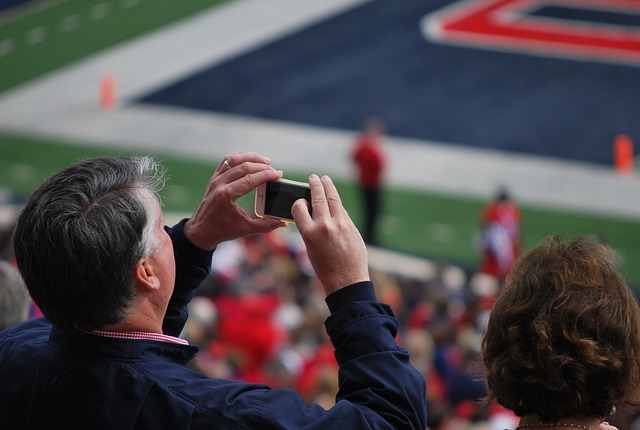In the world of college football, recruitment has always been a high-stakes, high-pressure process. Coaches, players, and families work tirelessly to make decisions that could alter the course of careers and programs. However, recent changes in NCAA rules, particularly the implementation of the Name, Image, and Likeness (NIL) program, have transformed the landscape of college football recruiting in ways that were once unimaginable. The NIL program, which allows student-athletes to profit from their personal brand, has added a new dimension to recruitment, significantly impacting both players and universities.
Understanding NIL in College Football
NIL refers to the ability of college athletes to earn money through their name, image, and likeness while maintaining their eligibility to play. Before the introduction of NIL, student-athletes were prohibited from receiving financial compensation beyond their scholarships and associated benefits. The landmark ruling in July 2021 by the NCAA, which opened the door for NIL deals, has ushered in a wave of change in how college football recruiting works.
The NIL program allows athletes to enter into sponsorships, sign endorsement deals, create personal merchandise, and even profit from social media platforms. This development has especially been significant for college football players, who now have the chance to capitalize on their performance, popularity, and social media following while still competing for their respective teams.

How NIL Is Reshaping College Football Recruiting
A New Recruiting Tool for Programs:
Historically, college football programs have recruited players based on the traditional elements: athletic ability, high school performance, academic standing, and potential to fit within a team’s culture. With NIL now in play, coaches and schools must also consider a player’s marketability. This means some recruits could see offers from schools not just based on athletic development, but also on their potential to help the university generate revenue through NIL opportunities.
For programs, NIL is quickly becoming a tool in the recruiting process. Coaches may highlight the prospect of endorsement deals with local businesses, social media partnerships, or even national brands that are interested in sponsoring players. A star recruit with a significant social media following or a well-known personal brand could be an attractive asset to a university looking to bolster its own brand and increase exposure.
The Rise of Collectives and NIL Deals:
As NIL has gained traction, many universities and alumni have formed “collectives” — independent groups that work to facilitate NIL opportunities for student-athletes. These collectives often serve as intermediaries between businesses, boosters, and players, creating lucrative sponsorship deals and endorsements.
Collectives, which can range from formal organizations to grassroots movements, can now play an integral role in the recruitment of top football prospects. For instance, a high school player might be more inclined to sign with a program that not only offers him top-tier coaching but also promises strong NIL opportunities. In some cases, these collectives are already offering six-figure deals to athletes, with some top-tier programs like the University of Alabama, Texas A&M, and USC leading the charge.
The “Pay-for-Play” Debate:
One of the most contentious aspects of NIL and its role in college football recruitment is the notion that it may contribute to a “pay-for-play” environment. While the NCAA prohibits direct payments to athletes in exchange for their performance on the field, NIL has created a gray area where recruits can be enticed by the promise of financial compensation off the field.
This has led to growing concerns about the fairness and integrity of recruitment. Critics argue that the NIL system could exacerbate existing inequalities in college football, with wealthier programs and schools with more lucrative booster support being able to attract top talent more easily. Furthermore, the introduction of NIL has led to some questioning whether college football has become more about making money than playing for school pride.
Impact on Player Choices:
For high school athletes, the recruitment process has become more complicated. In addition to evaluating the football program’s strength, coaching staff, and academic offerings, recruits now must consider how well they can leverage NIL opportunities at each school. For example, a player in a major metropolitan area may have more chances to profit from endorsement deals due to the larger local business environment. Likewise, players who have a strong social media presence may find more opportunities in markets that are already paying top-tier athletes.

In some cases, athletes might even prioritize NIL opportunities over the traditional factors that historically guided recruitment decisions, like team culture or geographic location. This shift could potentially create a divide in college football, where smaller programs and smaller markets may struggle to compete for top recruits unless they can offer substantial NIL packages.
Risks and Challenges for Athletes:
While NIL offers great opportunities for many athletes, it also comes with challenges. The business side of NIL can be overwhelming for young athletes, many of whom are not prepared to handle contracts, negotiations, or the pressure of being constantly in the public eye. Additionally, the lure of quick financial gain may divert focus away from academics and athletic development, potentially leading to long-term consequences for athletes who don’t manage their brand effectively.
Moreover, the emphasis on NIL opportunities may lead some recruits to prioritize the financial aspect of their decision, potentially overlooking factors such as team dynamics, coaching stability, and personal fit. The added focus on earning money could also make it harder for athletes to navigate their college experience, especially in the face of intense media scrutiny.
The Future of College Football Recruiting in the NIL Era
The introduction of NIL has forever altered the recruiting landscape in college football, creating both opportunities and challenges for players, coaches, and universities. As the NIL program continues to evolve, it is likely that its influence on recruiting will only grow. Schools will likely continue to refine their strategies for attracting top talent, and athletes will need to balance the allure of financial compensation with their long-term career goals.
Ultimately, NIL represents a seismic shift in college football recruiting. While some may worry about its potential to distort the integrity of the sport, it also offers a level of fairness and opportunity that was previously unavailable. For recruits, coaches, and programs, navigating this new environment will require adaptability, foresight, and a commitment to balancing athletics, academics, and business in this exciting new era of college football.
